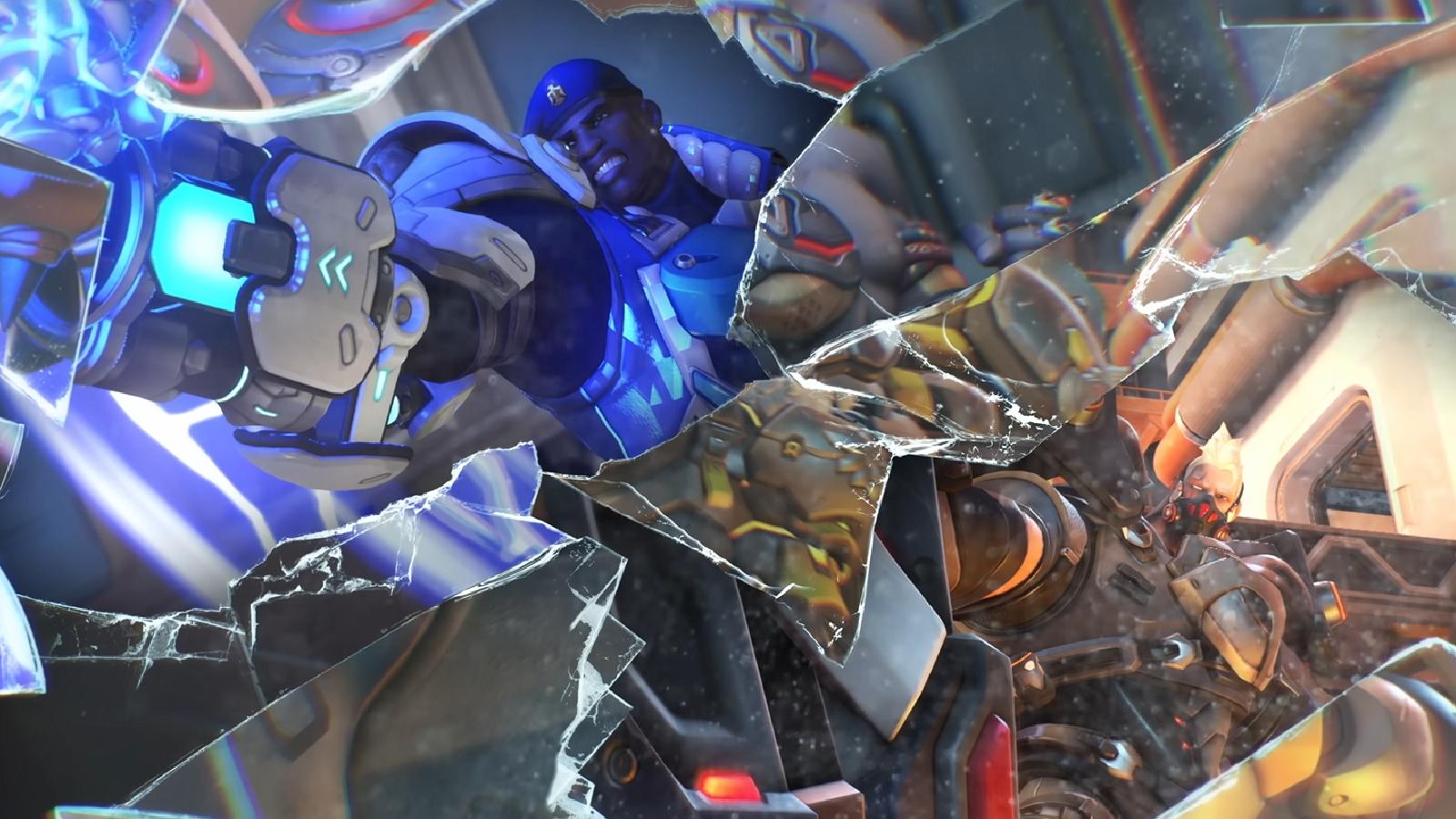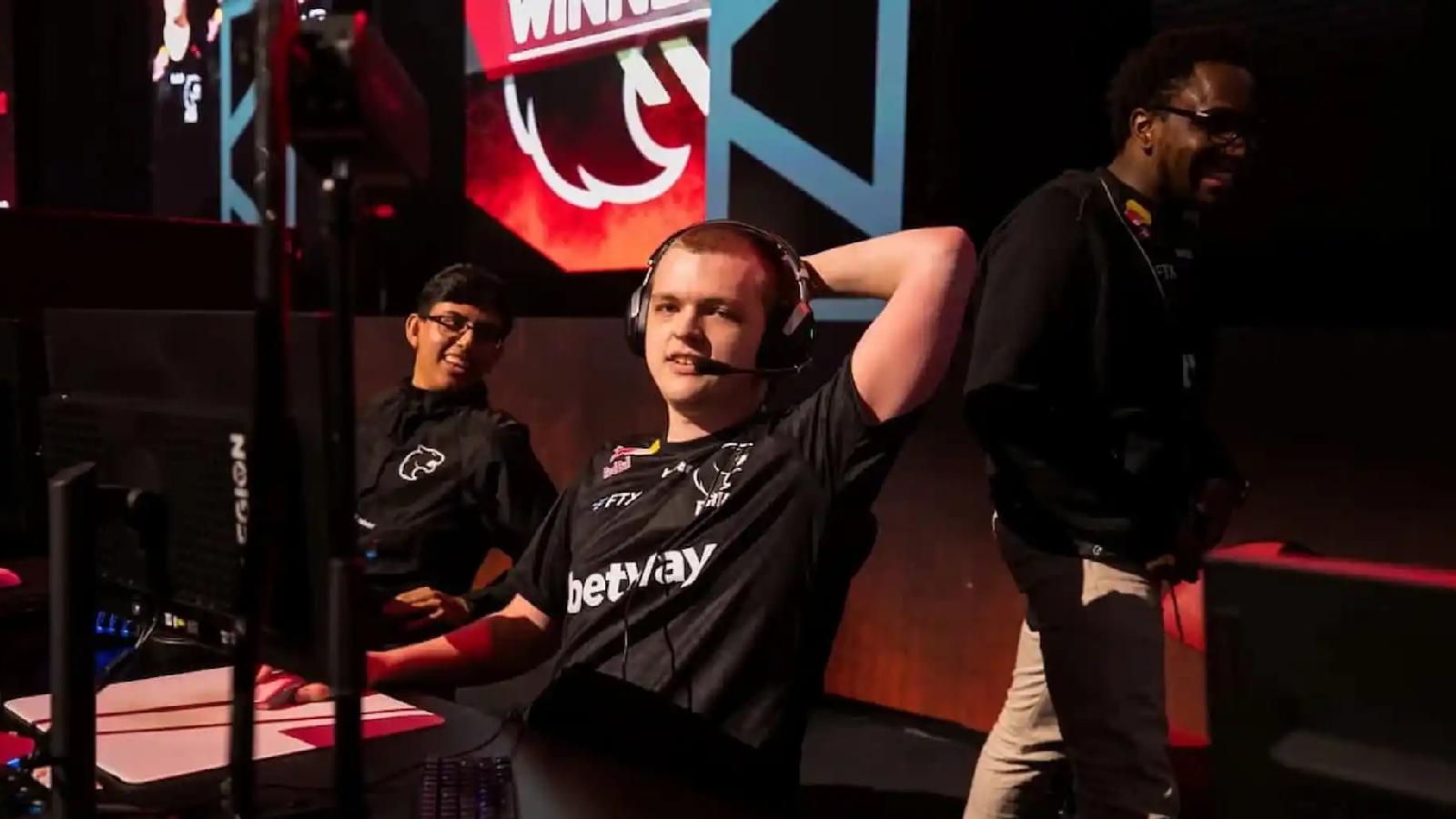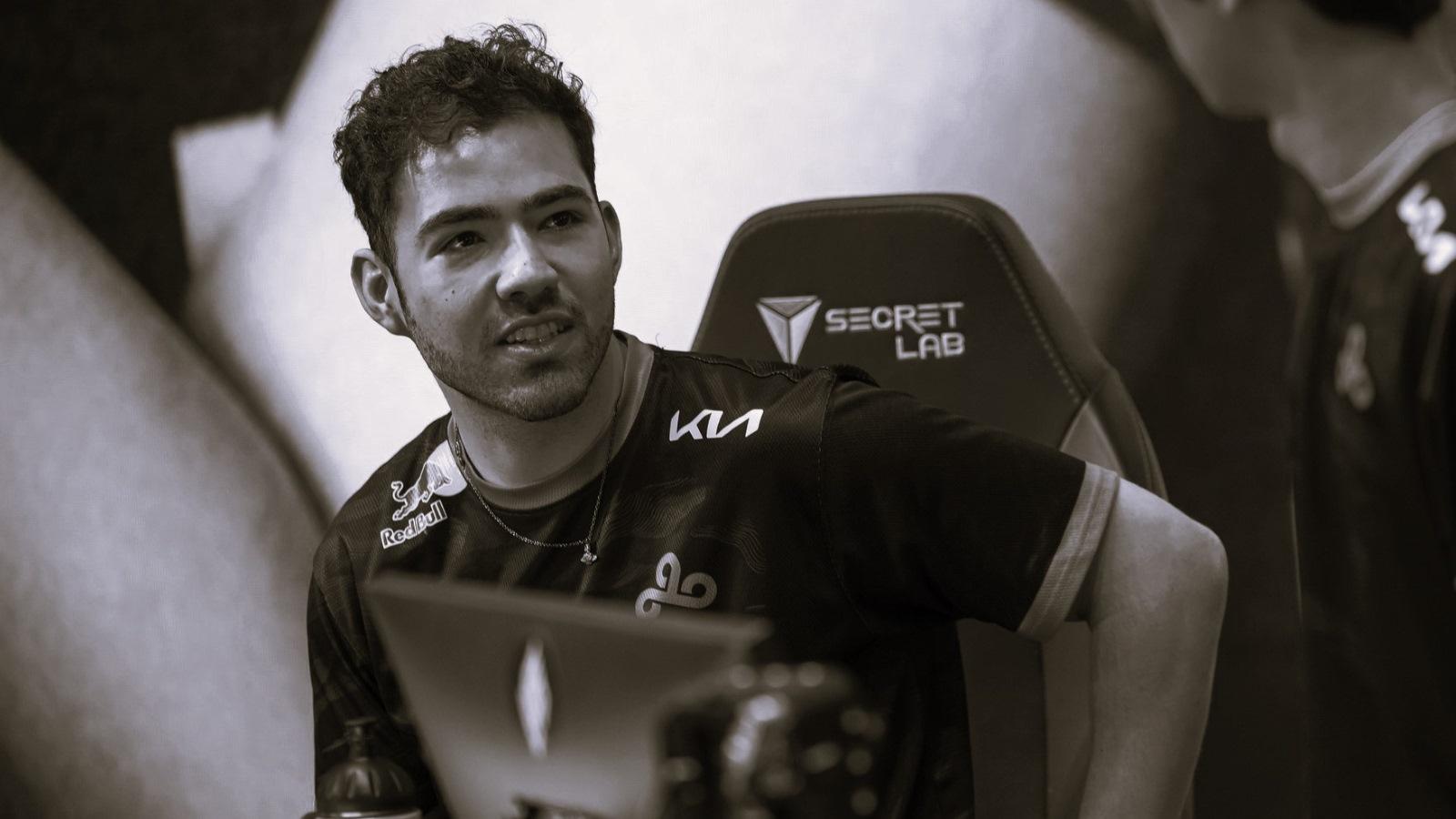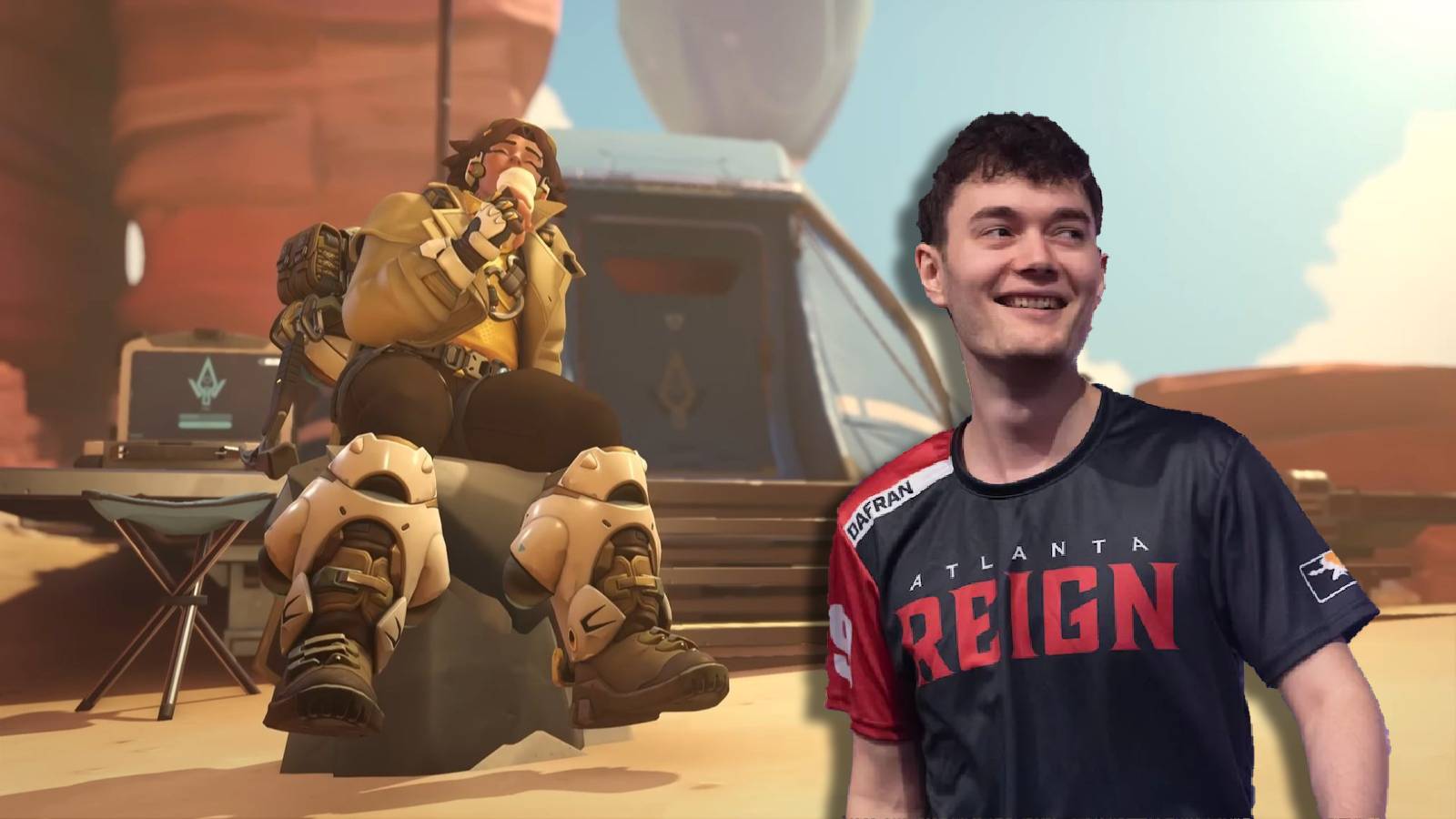Overwatch League Season Two Grand Finals boasts impressive viewership growth

The viewership figures for the Overwatch League Grand Final have been revealed, and Activision Blizzard will be pleased to learn that more people watched San Francisco Shock sweep the Vancouver Titans than Season One’s finale.
[ad name=”article1″]
With ESL One New York taking place at the same time, there was strong competition for viewers on Twitch, but fans could also watch the OWL Grand Final on many other digital platforms – including Zhanqi, CC, Huya, and Bilibili – plus ABC on television.
The Overwatch League Grand final raked in 1.12 million Average Minute Audience, up 16% from 2018. The move from ESPN to ABC, with its extended reach, could help account for the rise in viewership. Also, the regular season had an AMA of 313,000, which is an increase of 18% over last year.
In the United States, Activision Blizzard reported an 182,000 AMA for the 18-34 demographic (up 13% from 2018) for the Grand Final.
[ad name=”article2″]
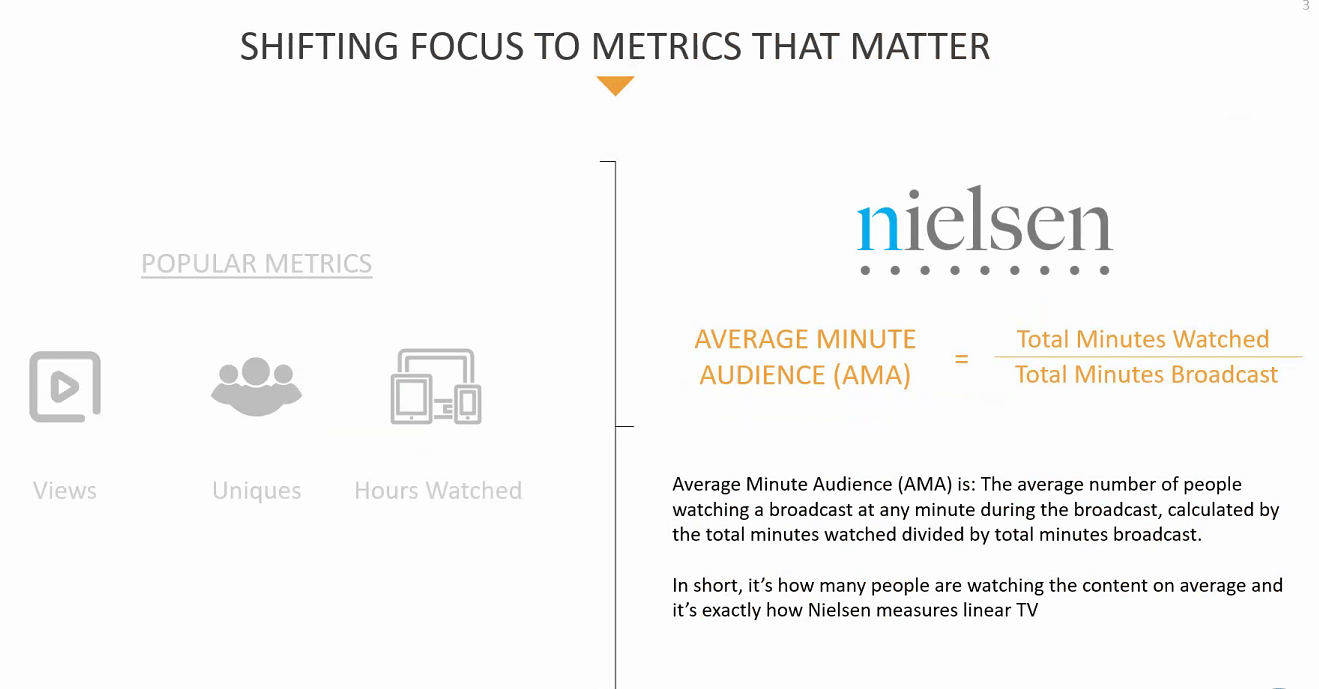 Blizzard, Riot, and ESL have all started using AMA to report viewership to standardize the industry.
Blizzard, Riot, and ESL have all started using AMA to report viewership to standardize the industry.Activision Blizzard have shifted to using Average Minute Audience (AMA) to measure their viewership, something which is fast becoming a standard in esports. This viewership metric is calculated by taking the total number of minutes watched by all viewers and dividing it by the total minutes broadcast.
[ad name=”article3″]
The reason for this is two-fold: firstly, Activision Blizzard and others are able to more accurately compare their broadcasts to traditional sports in terms that marketers are able to understand and are used to working with.
Secondly, AMA is used to measure audiences because incidental viewers and those who might come from advertising campaigns and only watch for a quick second can be accurately measured as less valuable than an engaged viewer.
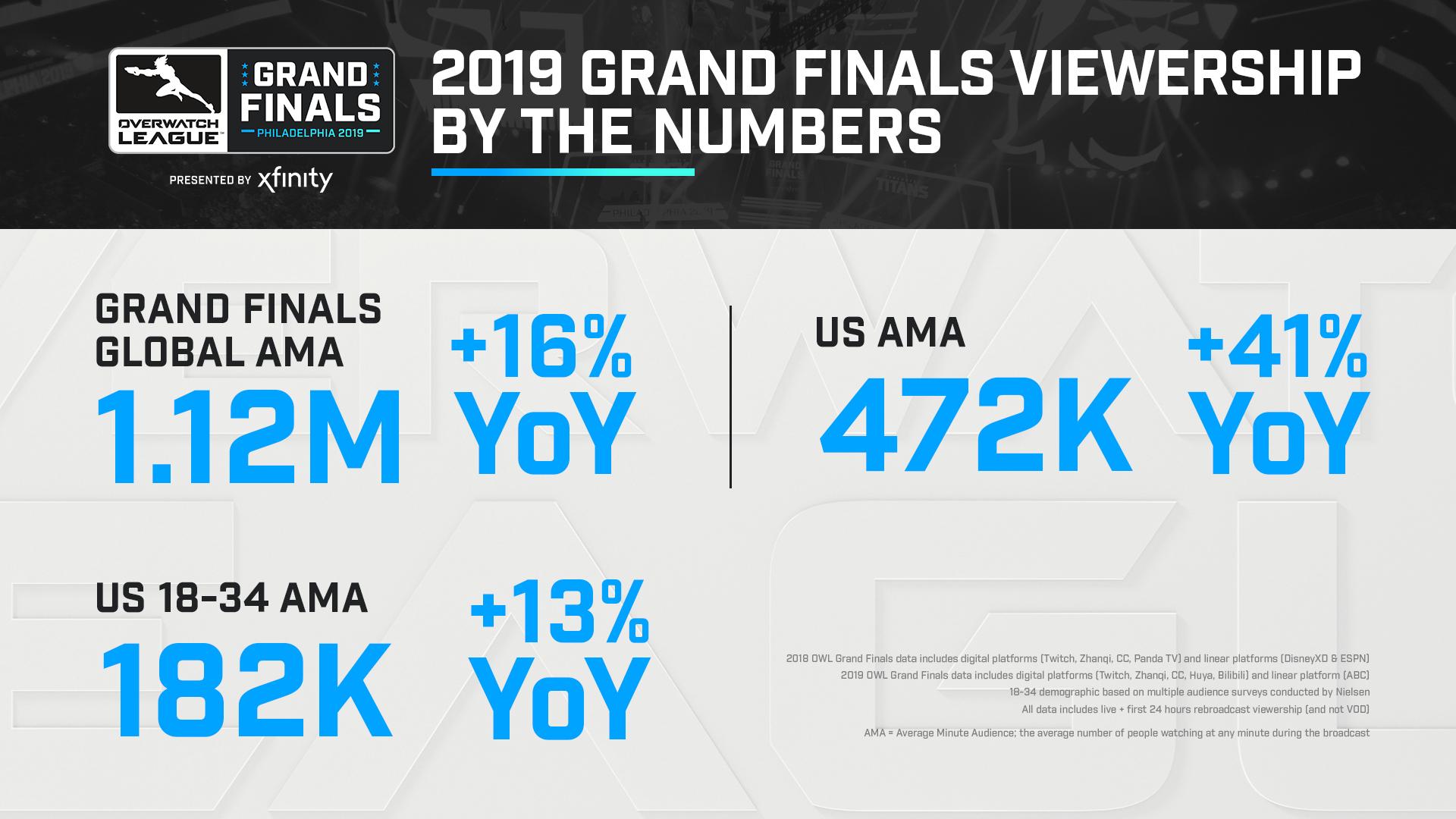 US viewership showed impressive growth year over year.
US viewership showed impressive growth year over year.It’s this difference that Activision Blizzard says is key in dispelling the notion that viewership numbers are being artificially inflated by the League and its partners through campaigns such as Coca-Cola’s during the Overwatch League playoffs, which employed Twitch embeds as advertisements on large sites, including The Verge and Eater.
Kasra Jafroodi, strategy and analytics lead at Activision Blizzard Esports, said: “While yes, those embeds do increase viewership numbers and uniques if a person only tunes in for a minute, they end up having a negligible impact on AMA because they are not viewing the stream for a long time. This is because AMA uses the number of minutes watched as a key part of its calculation.”
[ad name=”article5″]
On September 19, in an interview with Dexerto, Jafroodi elaborated on the programs that were run during the Overwatch League playoffs.
“To clarify, the Overwatch League is not running ads with embedded Twitch streams,” he said. “In fact, the Overwatch League’s playoff ad campaign has revolved around a very exciting series of short animated videos.
“The league partnered with Psyop on the creation of these videos, which have been a massive hit with our fans. Brand partners and media partners have ways of collaborating to create advertising to engage a wide range of audiences. We weren’t involved in this particular ad campaign, but we certainly appreciate the fact that our partners are helping us reach new audiences. Embeds give our partners, and the content they deploy, another channel to engage with our fans.”
Blizzard also said that neither they or their partners used any of these methods to boost viewership for the Grand Finals itself, saying that they wanted to keep the data pure for the biggest event on their calendar.
Activision Blizzard are particularly proud of how the figures compare to traditional sports, pointing out that they are the only sports league that is growing in the coveted 18-34 market.
“Three years after the invention of the game Overwatch, and two years from the founding of the league, we’re already competitive with these major sports leagues that have taken 60 or 70 years to get to this point,” said Daniel Cherry, CMO at Activision Blizzard Esports.
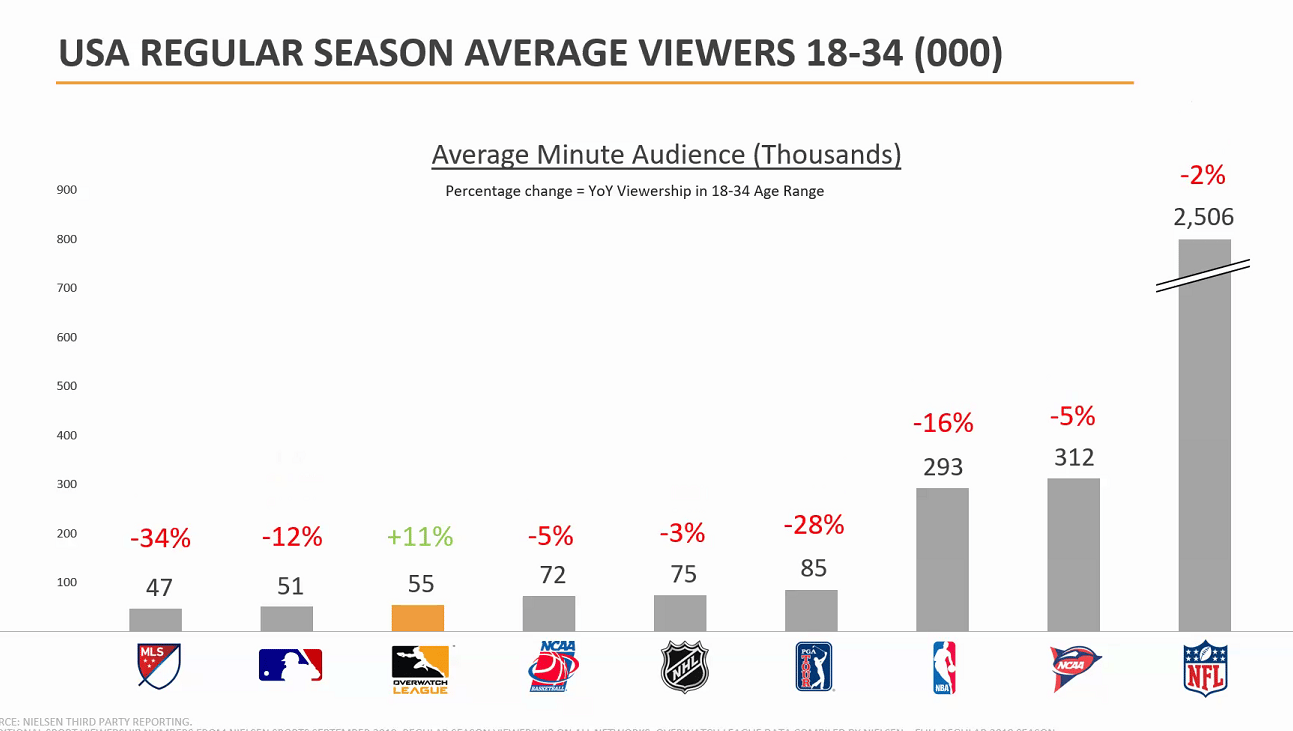 OWL boasts the only sports league that’s growing in the 18-34 demographic worldwide.
OWL boasts the only sports league that’s growing in the 18-34 demographic worldwide.The Overwatch League is in the offseason now, with teams already dropping players on their rosters as they prepare for the 2020 season. Teams are required to have eight players on their roster by November 15, and they are currently deciding whether or not to extend player contracts for those that have options.
Next season will see teams take to their home markets for the first time (aside from Season Two’s Homestand previews) rather than playing at Blizzard Arena in Los Angeles for every game, fulfilling the original vision of the league.
